“You’re a pigeon.”
“What? What do you mean, ‘I’m a pigeon.’?”
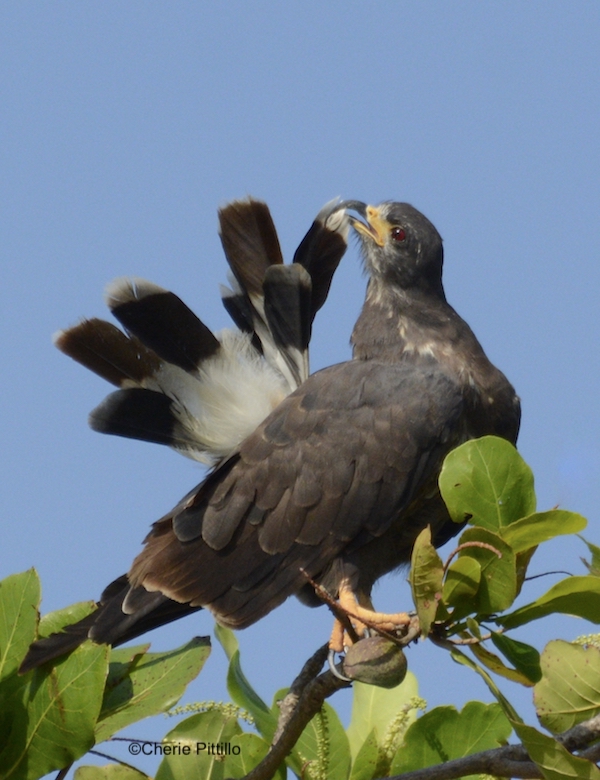
“I didn’t call you a ‘pigeon.’ I said,’uropygium’, (u-row-pidge-e-um). It’s the scientific name for the rump where the tail feathers grow. A preen or oil gland (uropygial gland) exists in most birds located just above their tails in the uropygium. Ironically, many pigeons don’t have them.”
“What’s the big deal about a preen gland?”
“It’s a huge deal, if you depended upon feathers for flight, water repellency, insulation, mate attraction, protection against harmful parasites, and feather structure maintenance. The preen gland is one of only a few glands in a bird’s skin. It aids in keeping the feathers flexible and supple instead of brittleness.
Did you know that mature feathers aren’t alive with no nerves or blood vessels inside them? So birds spend part of their daily lives in feather care.
Bird can use their beak or their head and neck to reach the preen gland. During preening, it’s also important to reach all the nooks and crannies on the body, or with the flamingo, “necks” and crannies.”
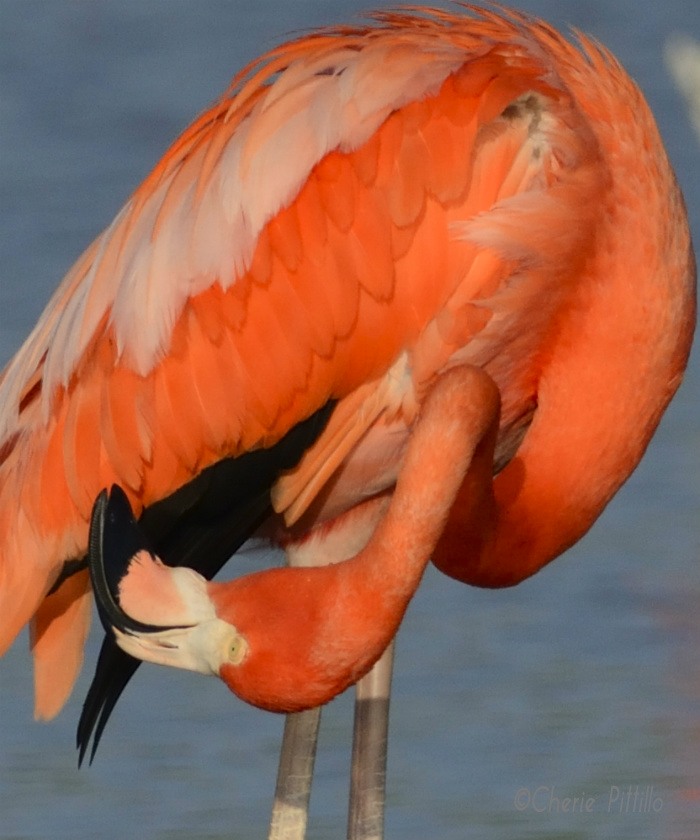
“Did you know that birds primarily use one of two scratching techniques to preen feathers on their head?”
“I don’t understand what you mean.”
“The bird may rub its head on the gland or wipe oil on its feet with the beak and then scratch its head. The two techniques are either the foot reaches under the wing to scratch or the foot goes over or through the wing. Some species like herons, owls, nightjars, frigatebirds, and others have a comb on the middle toe claw which may aid in distributing oil like this Snowy Egret. Note the leg and foot come up under the wing. The Great Kiskadee raises its foot over the wing. Birds may have more parasites on their heads if they can’t scratch or put oil on those headdresses.


A bird grasps a feather near its base and slides the bill toward the feather tip. This action re-interlocks the feather parts (barb and barbules), helps with waterproofing, and also removes dirt and old oil. The bird may look awkward as it twists it head and body to work the oil in place where it has fluffed its feathers. Preening also helps remove parasites.



Some of those parasites are feather-eating bacteria, which at least 20 species break down keratin. Some birds have feather pigments such as melanin that help resist them and in part 2 we learned feather mites feed on bacteria and fungi. Now research indicates preen glands contain helpful bacteria that protects feathers from keratin-eating bacteria that could destroy those feathers in about two weeks.
Furthermore scientists have learned that waterproofing doesn’t come from the oil of the oil gland but rather that the bird straightens and fluffs dense feathers to form a water-tight surface.
Even the gland structures vary as the waxy secretion empties onto the skin surface through one or more nipple-like projections. Some have small tufts of feathers associated with the pores and others don’t. The number of projections may vary up to 18. Check out the Squirrel Cuckoo as it squeezes the nub with its bill to get the secretion and then compare the different type of gland with that of the American Flamingo.
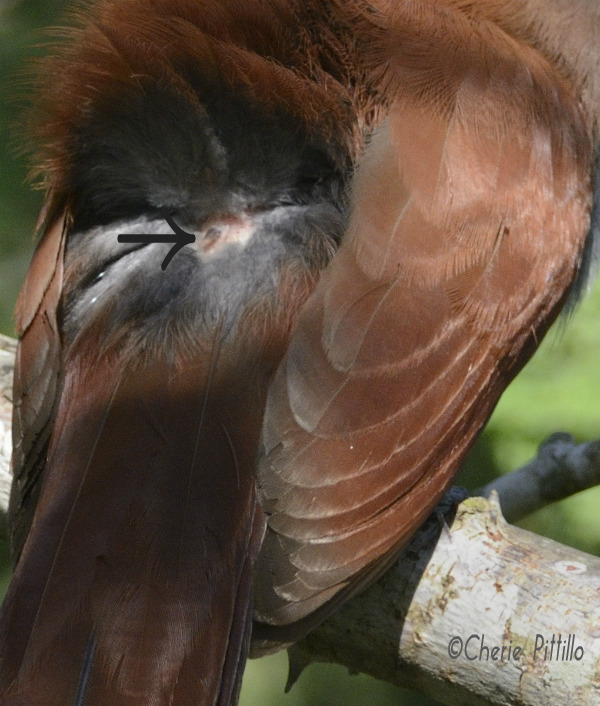

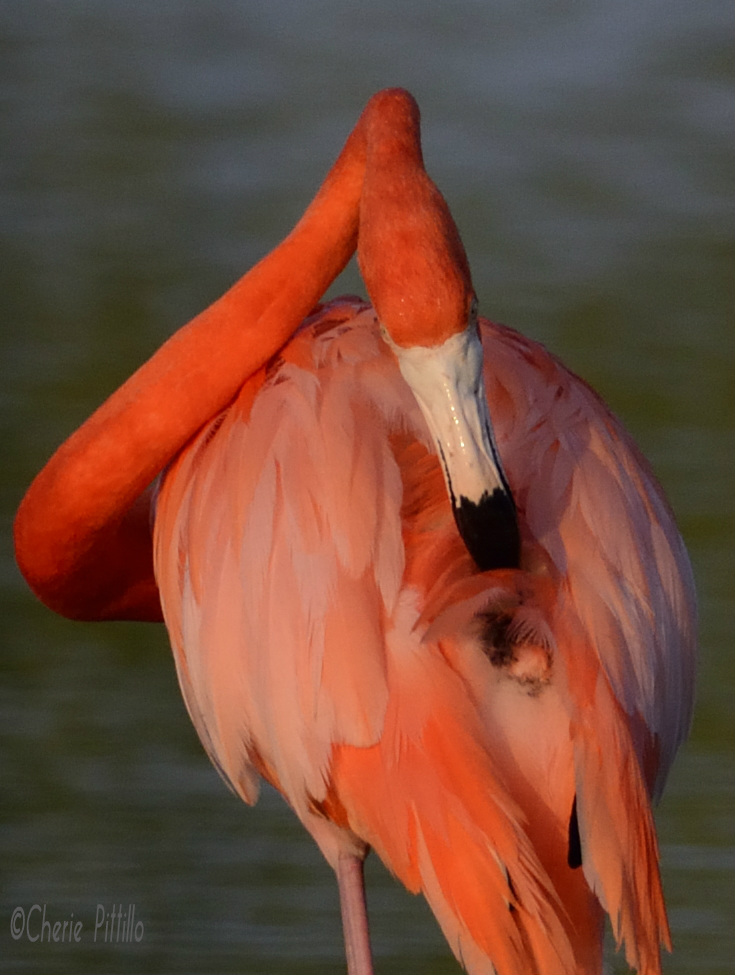
But wait, there’s more! Scientists in Spain studied both sexes of the Greater Flamingo to theorize secretions from the preen glands enhance the plumage color during mate selection and suggest it’s the equivalent to make-up in humans. Plus the courting male may twist his neck backwards to use the bill to preen feathers quickly in front of the female in a twist preen to attract her.
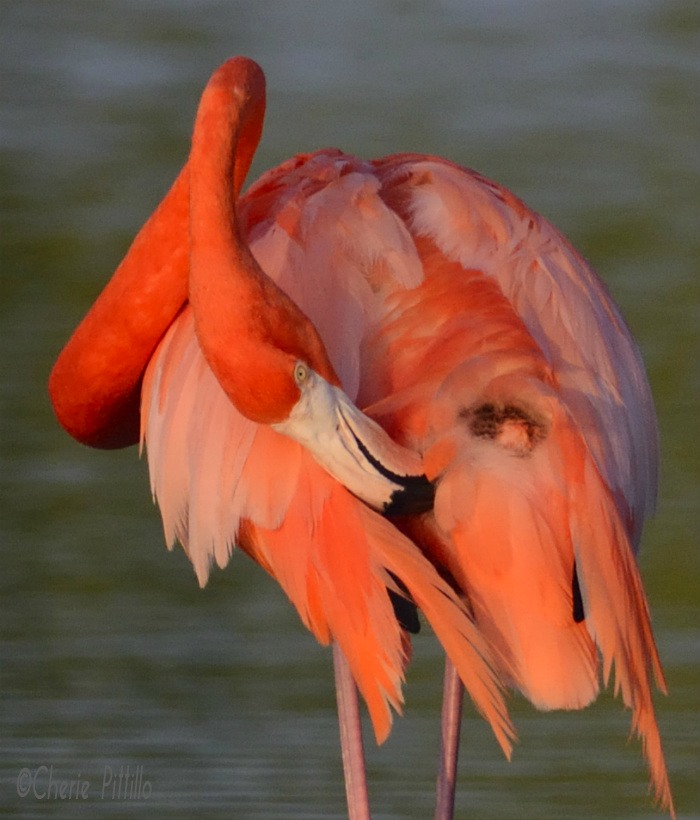
At least 13 bird families use this cosmetic coloration from carotenoid pigments in the preen oil. The more the bird rubs, the more intense the color. Color can fade in a few days when it’s not rubbed onto the feathers. Birds with more color bred earlier, seemed to live in a better habitat, and also have better food quality.
The majority of birds have these grand glands, but some don’t; some have remnants, and some embryos show the glands but not after hatching. Several species of young birds at four or five days of age have been observed preening. This helps to shed feather sheaths and to expand that encased plumage. Even as adults, this Anhinga is preening using its neck and head as well as bill to preen. Note the blue feather sheaths encasing new feathers.
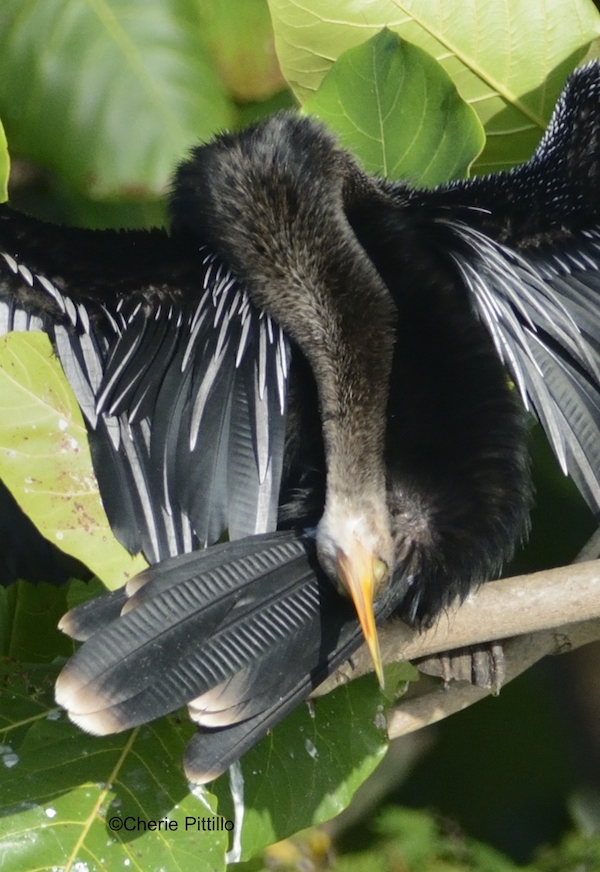
Glands are missing in emus, ostriches, cassowaries, kiwis, some woodpeckers, some doves, some pigeons, all Amazon parrots and other species.
How do birds care for their feathers without oil glands or reduced oil glands? We learned in Part 2 some species have downy feathers that break down into a feather dust. By the way, the two most common Amazon parrots in Merida, the White-fronted Parrot and the Red-lored Parrot, lack those rump bumps. I wonder if Amazon parrots were the original feather dusters. Anyway, the dust contains a fine, white waxy powder containing the fingernail-like protein, keratin. Other oil glandless birds may use dust baths.

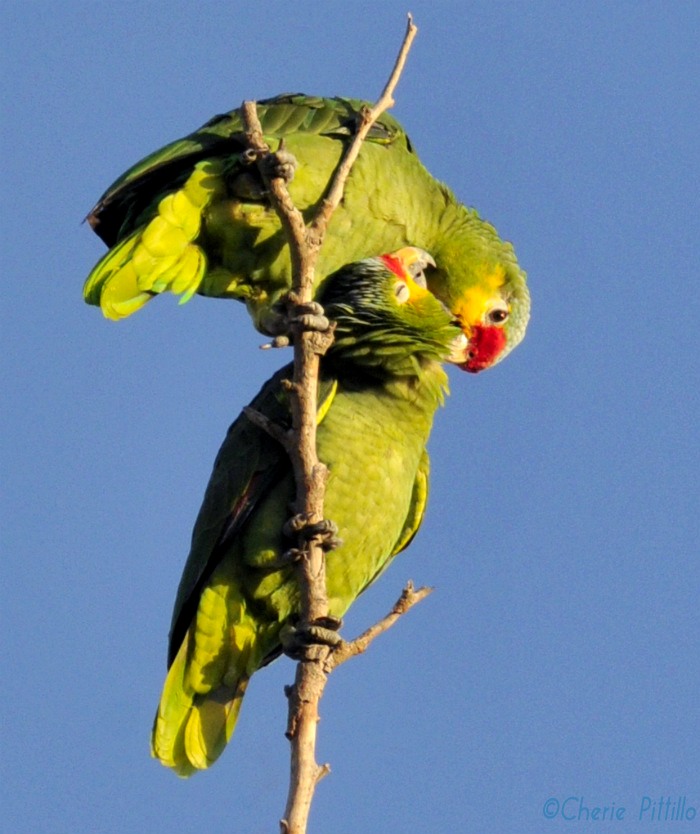
I think it’s safe to say that the functions of the uropygial gland differ among bird species and even within some species. What scientists do agree is that birds spend a lot of time in maintaining their feathers whether with the preen gland secretions, powder dust, dust baths and/or water baths.”
“Thanks so much for this information. I had no idea about the importance of preen glands or other ways to keep the feathers in prime condition.”
“You’re welcome and the links to Part 1 and 2 feature fascinating feather cleaning methods too!”
GO OUTDOORS TO PREEN YOUR SOUL.
LINK to PART 1
LINK to PART 2 https://www.theyucatantimes.com/2020/09/backyard-birding-in-merida-yucatan-and-beyond-splish-splash-preen-and-chicken-skin-part-2-of-2/
SPECIES LIST:
Snail Kite, Rostrhamus sociabilis, Gavilán Caracolero (Spanish)
American Flamingo Phoenicopterus ruber, Flamenco Americano (Spanish), Mekoh (Mayan)
Snowy Egret, Egret hula, Garza Dedos Dorados (Spanish), Ka’an ook (Mayan)
Great Kiskadee, Ptangus sulphuratus, Luis Bienteveo (Spanish),
X takay (Mayan)
Blue-winged Teal, Spatula discors, Cerceta Alas Azules (Spanish), Maxix (Mayan)
Squirrel Cuckoo, Playa cayana, Cuclillo Canelo (Spanish), Ki’ip cho
Anhinga, Anhinga anhinga, Anhinga Americana (Spanish), Chowak kaal (Mayan)
White-fronted Parrot, Amazona albifrons, Loro Frente Blanca (Spanish) Sak pool xt’uut (Mayan)
Red-lored Parrot, Amazon autumnalis, Loro Cachetes Amarillos (Spanish), Kocha’a (Mayan)
DISCLAIMER: REFERENCES DO NOT ALWAYS AGREE ON INFORMATION:
The Handbook of Bird Biology, Sal a Pajarear Yucatán, Bird & Reserves of the Yucatan Peninsula, A Guide to the Birds of Mexico and North Central America, Parent Birds and Their Young, The Sibley Guide to Birds, Lives of North American Birds, Revista Brasileira de Ornitologia, 21(3), 162-167,September 2013, Juan A. Amat, Miguel A. Rendón, Juan Garrido-Fernández, Araceli Garrido, Manuel Rendón-Martos, Antonio Pérez-Gálvez. Greater flamingos Phoenicopterus roseus use uropygial secretions as make-up. Behavioral Ecology and Sociobiology, 2010
https://www.nationalgeographic.com/news/2010/11/101110-flamingos-makeup-mating-science-animals/
http://news.bbc.co.uk/earth/hi/earth_news/newsid_9135000/9135454.stm
https://www.thespruce.com/why-birds-preen-386448
https://www.sciencedirect.com/topics/agricultural-and-biological-sciences/preening
https://www.neaq.org/blog/preen-back-ill-preen/embed/#?secret=XVcAFOPbli
www.ugr.es/-gmr/PDFs/2017_Biological%20Reviews.pdf
http://www.birdsofseabrookisland.org/taxa/t000d-evidence4.html
http://www.flamingos-world.com/flamingo-social-structure
http://www.exoticpetvet.net/avian/uropygial.html
Elder, William H. Oil Gland of Birds. The Wilson Bulletin, 66, (1), 6-31, March, 1954
https://sora.unm.edu/sites/default/files/journals/auk/v076n03/p0339-p0342.pdf
https://sora.unm.edu/sites/default/files/journals/condor/v022n05/p0168-p0170.pdf
https://www.journals.uchicago.edu/doi/abs/10.1086/510095
Cherie Pittillo, “nature inspired,” photographer and author, explores nature everywhere she goes. She’s identified 56 bird species in her Merida, Yucatan backyard view. Her monthly column features anecdotes about birding in Merida, Yucatan and also wildlife beyond the Yucatan.
Contact: [email protected] All rights reserved, ©Cherie Pittillo
